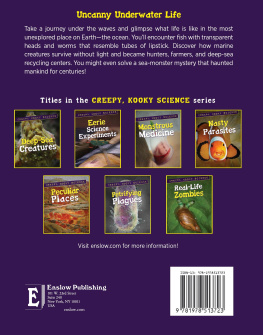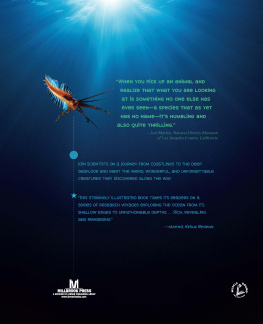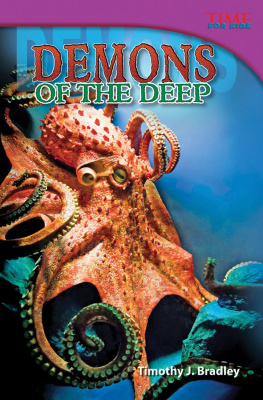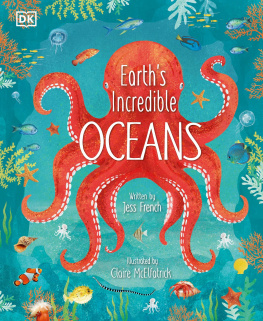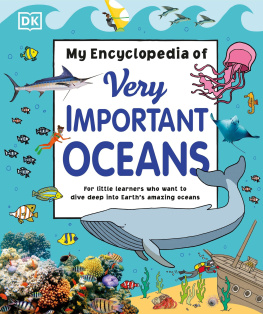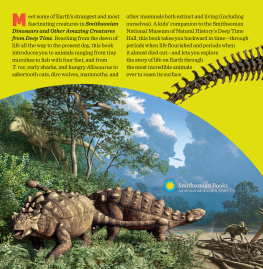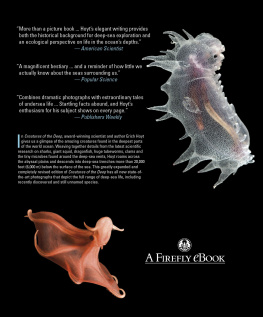
Published in 2020 by Enslow Publishing, LLC
101 W. 23rd Street, Suite 240, New York, NY 10011
Copyright 2020 by Enslow Publishing, LLC
All rights reserved.
No part of this book may be reproduced by any means without the written permission of the publisher.
Library of Congress Cataloging-in-Publication Data
Names: Troup, Roxanne, author.
Title: Deep-sea creatures / Roxanne Troup.
Description: New York: Enslow Publishing, 2020. | Series: Creepy, kooky science | Includes bibliographical references and index. | Audience: Grade 5-8.
Identifiers: LCCN 2019005494| ISBN 9781978513723 (library bound) | ISBN 9781978513716 (paperback)
Subjects: LCSH: Deep-sea animalsJuvenile literature.
Classification: LCC QL125.5 .T76 2020 | DDC 597/.63dc23
LC record available at https://lccn.loc.gov/2019005494
Printed in the United States of America
To Our Readers: We have done our best to make sure all websites in this book were active and appropriate when we went to press. However, the author and the publisher have no control over and assume no liability for the material available on those websites or on any websites they may link to. Any comments or suggestions can be sent by email to .
Photo Credits: Deep-Sea Creatures Photo research by Bruce Donnola Cover, p. Peter Scoones/Science Photo Library/Getty Images.
Contents
Introduction
W hat is it like to walk on the moon? How long does it take to travel one light-year? What is the weather like on Saturn? There is much to learn about space, but scientists currently know more about Mars than they know about the ocean! Marine scientists estimate that 95 percent of Earths oceans is unexplored!
Modern oceanography didnt begin until 1872. That Christmas, six scientists set sail aboard a retired British warship named Challenger. Their job was to map the ocean floor, catalog marine life, and track the oceans currents. For four years, these men sailed around the world collecting samples and measuring. They found the Mariana Trench, the deepest part of the ocean, and mapped part of the Mid-Atlantic Ridge. And they discovered more than 4,700 new species of plants and animals.
The Challenger Expedition inspired others to study the ocean, too. In 1930, Otis Barton (18991992) and Dr. William Beebe (18771962) became the first to see deep-sea creatures in their natural habitat. Their vessel, the bathysphere, wasnt fancy. It didnt even have an engine. It had to be lowered into the oceans deep, dark cold by cables. There was just enough room in that steel ball for the explorers to sit side by side with their knees pulled up to their chins. Barton and Beebes first dive took them 803 feet (245 m) into the deep.
Then, in 1934, they dove one-half mile (0.8 km) down. Dr. Beebe wrote about their experiences. He described the dark and the cold. He told of see-through fish. He tried to explain the strange flashing lights they witnessed.
Dr. Beebe named four new fish on his dives into the deep. But many oceanographers didnt believe what he saw. Others thought he mistook known species for something new.
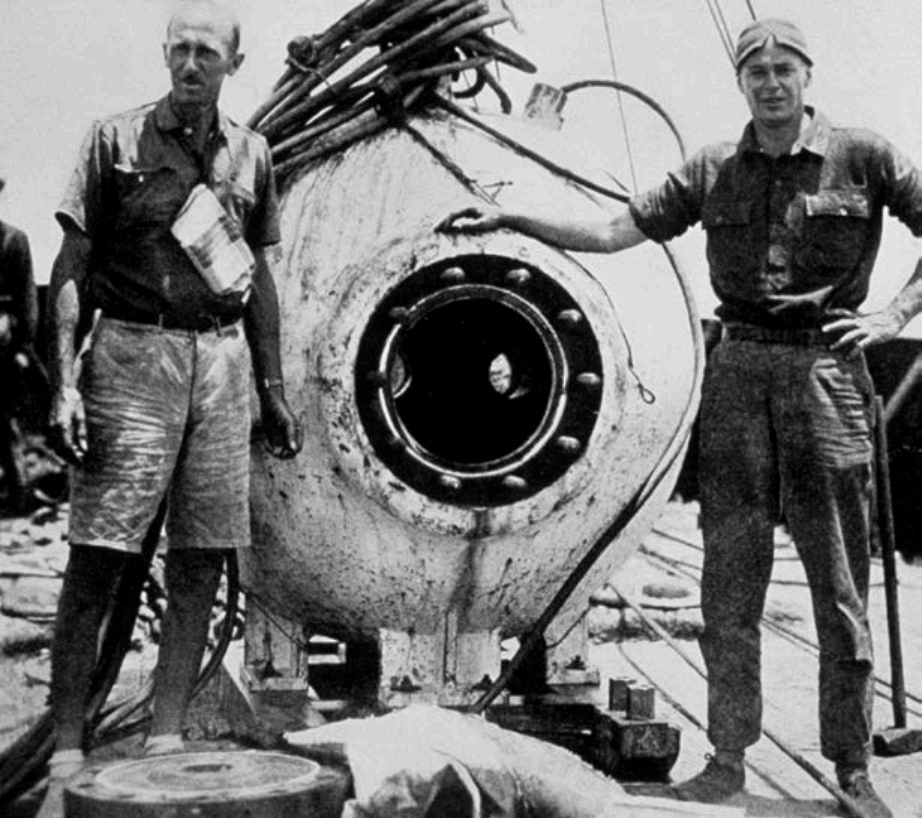
Between 1930 and 1934, Dr. William Beebe ( left ) and Otis Barton dove together more than thirty times in their 5,000-pound (2,268-kg) bathysphere.
In 1960, Jacques Piccard (19222008) and US Navy lieutenant Don Walsh (1931) made it to the bottom of the ocean. Their ship, the Trieste, looked like a bathysphere with a long balloon on top. It dove 35,800 feet (10,912 m)nearly 7 miles (11 km)into the Mariana Trench. This deepest part of the ocean is called Challenger Deep. It is named after the famous Challenger Expedition that discovered the trench. Here the pressure of the water is so great, scientists didnt think life could exist. What Piccard and Lieutenant Walsh saw proved them wrong.
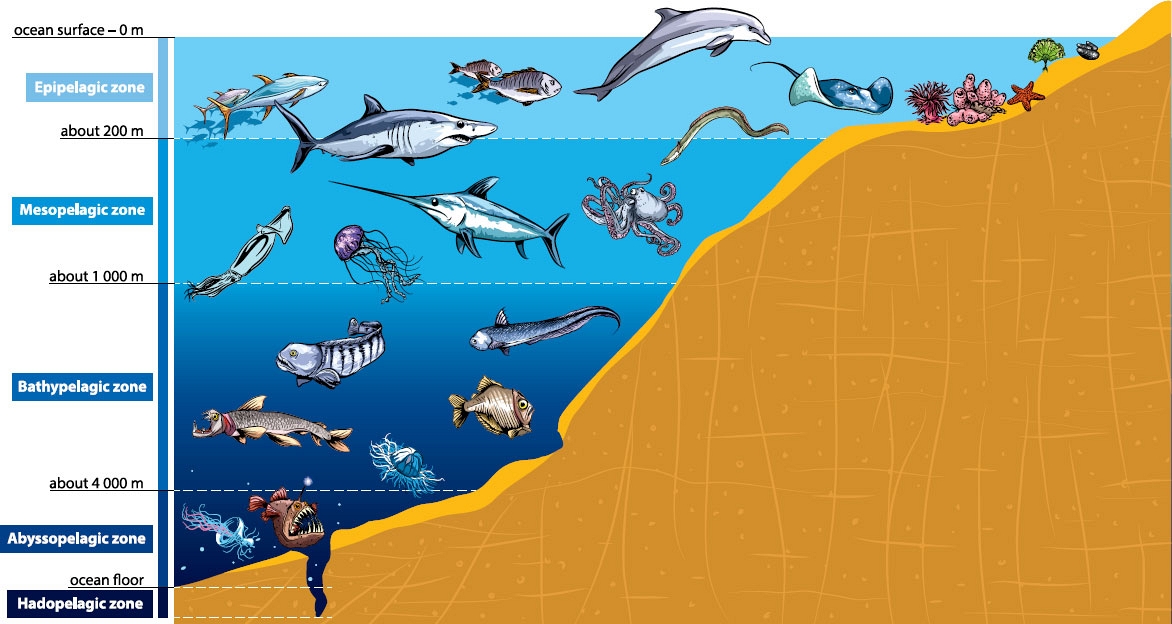
Oceanographers determine ocean zones by the amount of sunlight each receives.
Each dive into the depths reveals something new about the ocean and the creatures that live there. In order to make their jobs easier, oceanographers divide the ocean into zones. The zone closest to the surface is called the epipelagic or sunlit zone. This part of the ocean receives enough sunlight to grow plants. Most of the marine creatures people are familiar with live here: dolphins, seahorses, tuna, swordfish. But what lives below this zone? What did Barton and Beebe see in the deep, dark cold? What kind of life did Piccard and Walsh discover? Experts are still finding out!
CHAPTER 1
Barreleye Fish: Tiny Submarines
J ust below the sunlit zone is the mesopelagic or twilight zone. Mesopelagic is a Greek word that means middle sea. This zone extends from roughly 650 feet (198 m) below the surface of the water to a little more than 3,000 feet (914 m). It is cold and gets very little light from the sun.
The barreleye fish is a small fish that lives in the twilight zone. It has big barrel-shaped eyes covered by green lenses. The lenses filter sunlight so the barreleye can see the bioluminescent flashes of its prey.
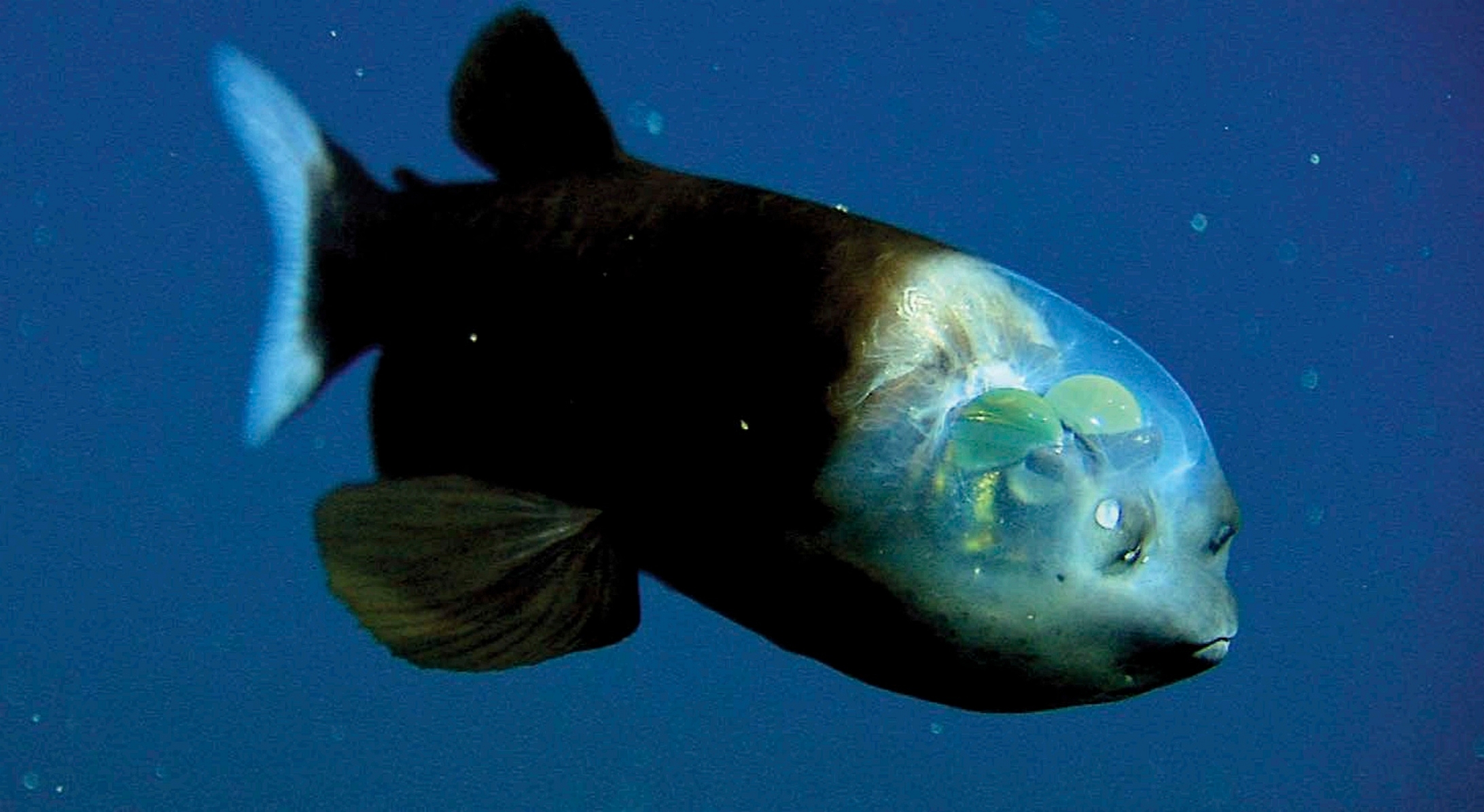
This image taken in 2004 and provided by scientists at the Monterey Bay Aquarium Research Institute shows the barreleyes remarkable transparent head and bright green eyes.
The barreleye was discovered in 1939. But oceanographers couldnt figure out how this curious fish survived. The body of every 6-inch (15-cm) fish they caught was damaged in the nets on the way up to the surface. For more than fifty years, marine biologists wondered why its huge barrel eyes pointed straight up. How could it eat? How did it avoid predators and obstacles? It wasnt until 2004 that they realized part of the fish had been missing in all of the specimens they had seen!
Is That a Brain?
In 2004, the first live barreleye fish was found off the coast of California. Two researchers at the Monterey Bay Aquarium
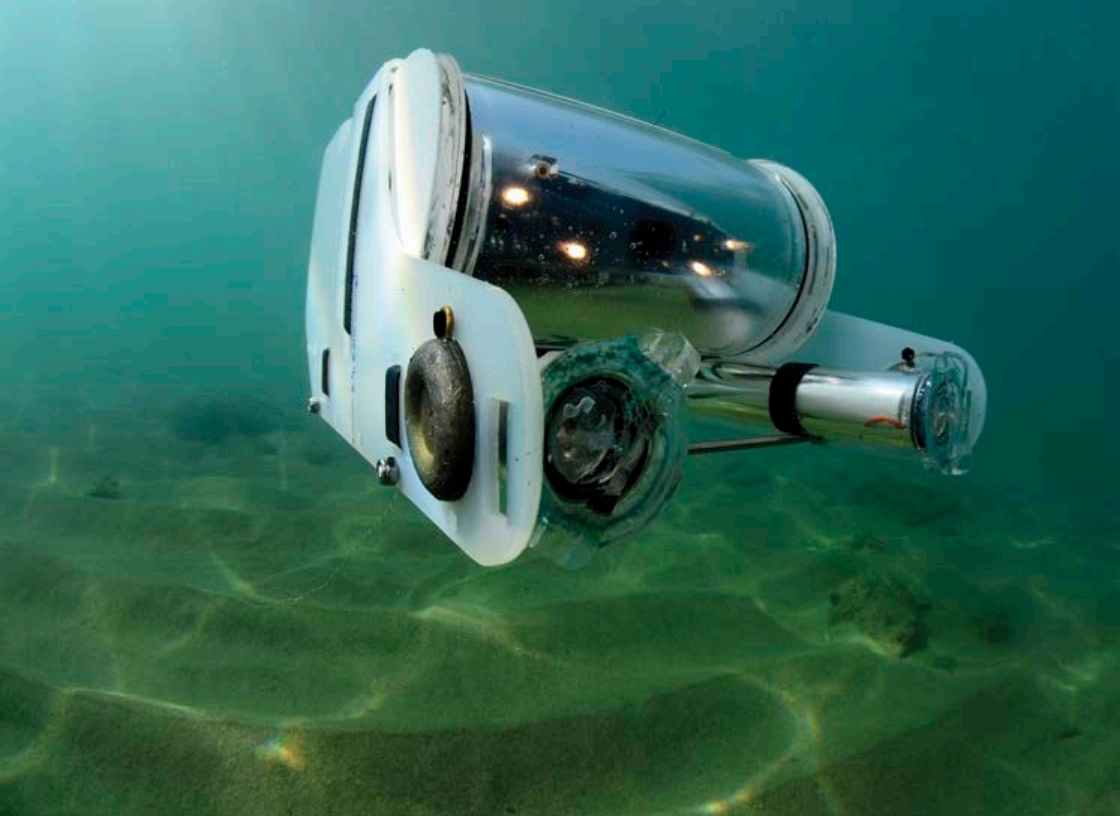
ROVs help oceanographers study life deep underwater without disturbing marine habitats.
The Monterey Bay Aquariums video showed a submarine-shaped barreleye hovering in the water 2,000 feet (609 m) below the surface. Its eyes glowed green. And its head was transparent! Scientists had never seen that before. In every sample they had studied, that part of the head had been missing. The top section of a barreleyes head is filled with clear liquid. Its large eyes sit under this delicate shield. They look like they are wearing a pair of googly-eye glasses! Scientists believe these glasses or lenses work like binoculars. The lenses allow the fish to zoom in on its prey. The barreleye can direct its eyes straight up or straight out. This way the fish can watch for potential prey above its clear head or rotate its eyes forward to focus on eating.
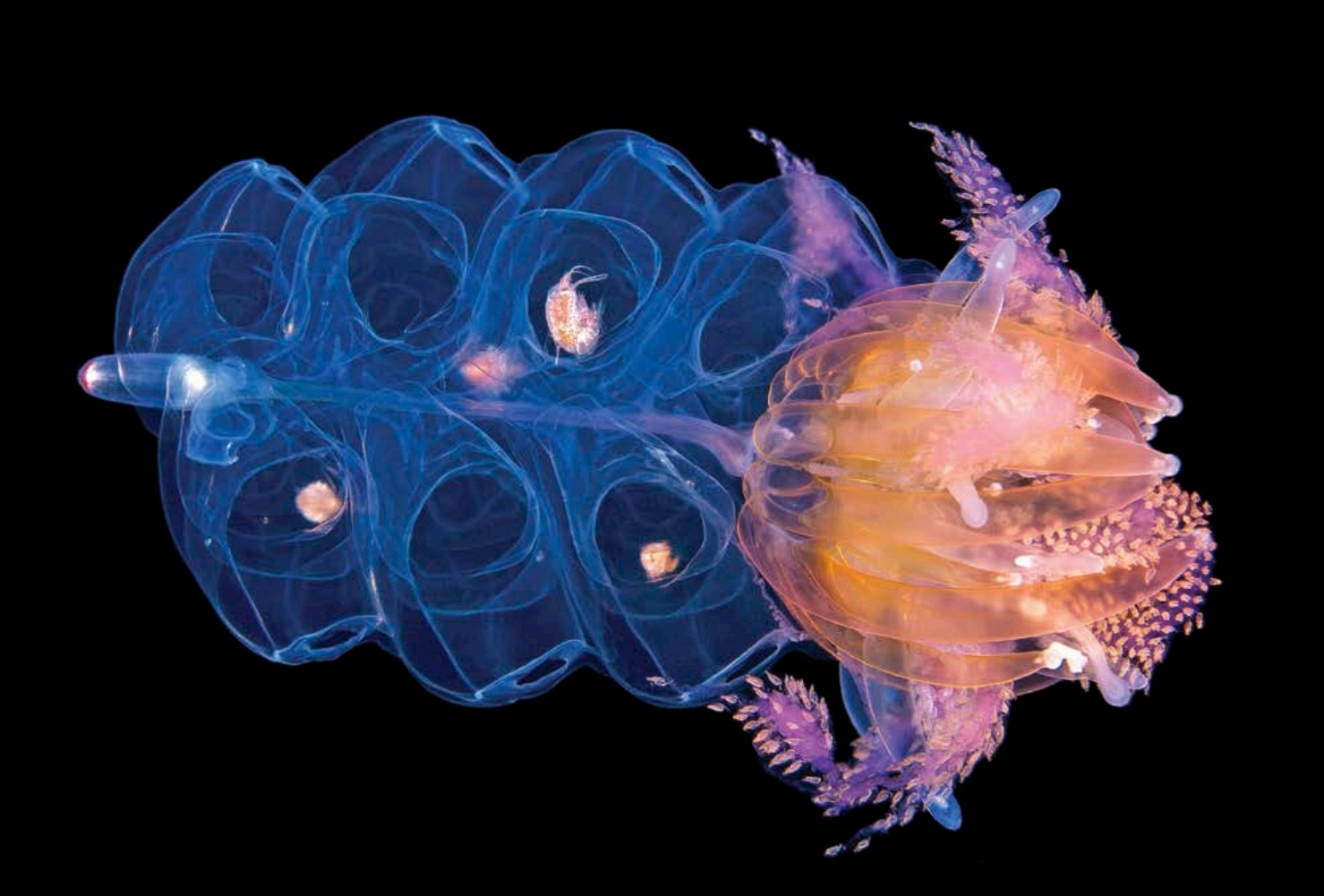
Hula skirt siphonophores live in cool waters to depths of 3,280 feet (1,000 m). Their bells are filled with gas and are used to swim. Their skirt stings and catches food.
Next page
